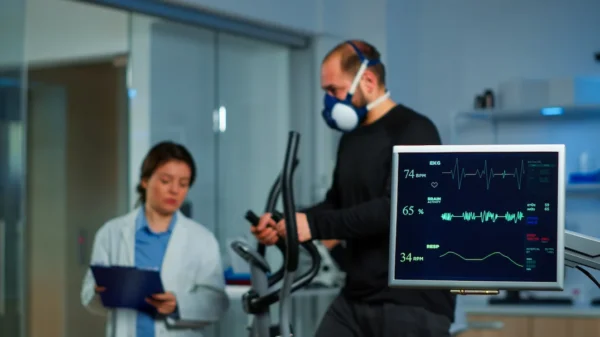Coronary angiography is a diagnostic procedure used to visualize the coronary arteries, the blood vessels that supply oxygen-rich blood to the heart muscle. It is considered the gold standard test for detecting narrowing or blockages in these arteries.
The procedure is minimally invasive and is performed using thin catheters guided through blood vessels to the heart. Coronary angiography provides precise, real-time images that help doctors decide whether medical treatment, stenting, or surgery is needed.
- Why Is Coronary Angiography Performed?
- How to Prepare for Coronary Angiography
- What Happens During Coronary Angiography?
- What Will I Feel During the Procedure?
- What Happens After Coronary Angiography?
- What Can Coronary Angiography Show?
- Can Treatment Be Done at the Same Time?
- Risks of Coronary Angiography
- Is Coronary Angiography Safe?
- In Summary
Why Is Coronary Angiography Performed?
Coronary angiography is performed when there is concern that blood flow to the heart muscle may be reduced. This can happen when plaque builds up inside the coronary arteries, a condition known as coronary artery disease.
It is commonly recommended to:
- Evaluate chest pain or pressure suggestive of angina
- Diagnose or confirm coronary artery disease
- Assess the severity and location of arterial blockages
- Investigate heart attacks or unstable symptoms
- Guide treatment decisions such as angioplasty, stenting, or bypass surgery
Because it shows the arteries directly, coronary angiography provides information that cannot be obtained from non-invasive tests alone.
How to Prepare for Coronary Angiography
Before the procedure, blood tests and basic heart evaluations are usually performed. You may be asked not to eat or drink for several hours beforehand.
Certain medications may be adjusted prior to the procedure, especially blood thinners or diabetes medications. Your healthcare team will provide detailed instructions tailored to your condition.
What Happens During Coronary Angiography?
Coronary angiography is performed in a specialized cardiac catheterization laboratory. You are usually awake but given medication to help you relax.
A catheter is inserted into a blood vessel—most commonly through the wrist (radial artery) or sometimes the groin (femoral artery)—and gently guided to the heart. Contrast dye is then injected into the coronary arteries.
As the dye flows through the arteries, X-ray images are taken, allowing the medical team to see narrowings, blockages, or normal blood flow in real time.
The procedure typically takes 30 to 60 minutes, depending on complexity.
What Will I Feel During the Procedure?
The procedure is usually painless. You may feel mild pressure at the catheter insertion site.
When the contrast dye is injected, some people feel a brief warm sensation in the chest or body. This sensation passes quickly.
What Happens After Coronary Angiography?
After the procedure, the catheter is removed and pressure is applied to prevent bleeding. You will be monitored for several hours to ensure the access site heals properly.
If the procedure was performed through the wrist, recovery is often quicker. Most patients can go home the same day or the following day.
What Can Coronary Angiography Show?
Coronary angiography can identify:
- The presence and severity of coronary artery blockages
- Which arteries are affected
- Whether blockages are suitable for stenting or surgery
- Normal coronary arteries when no disease is present
This information is critical for selecting the most appropriate treatment strategy.
Can Treatment Be Done at the Same Time?
Yes. If a significant blockage is found, balloon angioplasty and stent placement may sometimes be performed immediately during the same procedure, provided it is safe and appropriate.
In other cases, angiography is used to plan treatment at a later time.
Risks of Coronary Angiography
Coronary angiography is a commonly performed and generally safe procedure, especially in experienced centers. As with any invasive test, risks exist but are uncommon.
Potential risks include bleeding or bruising at the access site, allergic reaction to contrast dye, blood vessel injury, or heart rhythm disturbances. Serious complications are rare.
Is Coronary Angiography Safe?
Yes. For most patients, the benefits of accurately diagnosing coronary artery disease far outweigh the risks. The procedure is performed under continuous monitoring by experienced cardiology teams.
In Summary
Coronary angiography is a minimally invasive test that provides detailed images of the coronary arteries and remains the most accurate way to diagnose coronary artery disease. By clearly showing where and how severely arteries are narrowed, it plays a central role in guiding treatment decisions and improving heart outcomes.
Reference: Angiography





